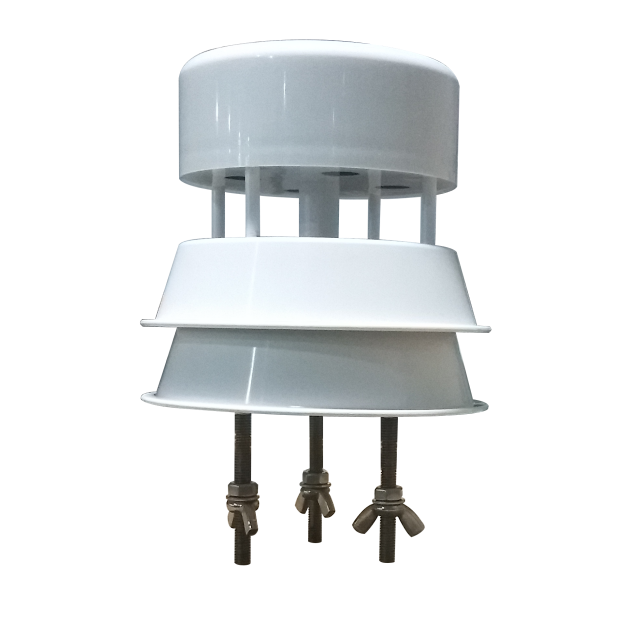

— Products —
 Consumer hotline +8618073152920
Consumer hotline +8618073152920 WhatsApp:+8615367865107
Address:Room 102, District D, Houhu Industrial Park, Yuelu District, Changsha City, Hunan Province, China
All products
ultrasonic wind speed sensor is a device that uses ultrasonic sound waves to measure the speed of wind. It works by emitting high-frequency sound waves into the air and then measuring the time it takes for the sound waves to be reflected back after bouncing off of air particles moving in the wind. By calculating the change in frequency of the sound waves due to the Doppler effect, the sensor can determine the speed of the wind.
Tel/WhatsApp:+8615367865107
Email:Arvin@niubol.com +Nearly 100 partner company in more than 68 countries. We are committed to providing high-quality, practical products to meet your needs and help you solve problems.Product Details
An ultrasonic wind speed sensor is a device that uses ultrasonic sound waves to measure the speed of wind. It works by emitting high-frequency sound waves into the air and then measuring the time it takes for the sound waves to be reflected back after bouncing off of air particles moving in the wind. By calculating the change in frequency of the sound waves due to the Doppler effect, the sensor can determine the speed of the wind.

Ultrasonic wind speed and direction sensor technical parameters:
| Wind speed measurement range: | 0~40m/s |
| Wind direction measurement range: | 0~360° |
| Wind speed measurement accuracy: | Low wind speed: ±0.5m/s Low wind speed: ±3° High wind speed: ±1m/s High wind speed: ±5° |
| Resolution | Wind speed measurement resolution: 0.01m/s; Wind direction measurement resolution: 1° |
| Power supply: | DC12V |
| Communication output: | RS485 |
| Baud rate: | 9600 |
| Communication protocol: | MODBUS communication protocol |
| Shell material: | engineering plastic |
| Storage temperature: | -50°C – 80°C |
| Operating temperature: | -40°C-70°C |
| Working humidity: | 0-100%RH |
| Appearance size/weight: | φ90 X 140mm/0.6Kg |
| Overall power consumption: | 0.2W |
| Protection class: | IP65 |
Ultrasonic wind speed sensors are often used in applications where traditional anemometers (which use rotating cups or vanes to measure wind speed) are not suitable, such as in harsh environments, on tall buildings, or in situations where the wind direction is constantly changing. They are also useful for making precise measurements of wind speed over short periods of time, such as in weather monitoring or in wind energy research.
Ultrasonic wind speed sensors work based on the principle of measuring the time-of-flight of ultrasonic waves. Here's a simplified description of how they operate:
1. The sensor consists of two or more sets of transducers placed at different positions on the device.
2. Each transducer sends out ultrasonic sound waves in specific directions.
3. The sound waves travel between transducers, and their speeds are influenced by the wind.
4. By analyzing the time it takes for the sound waves to travel between the transducers, the sensor can calculate the wind speed and direction.
5. Advanced algorithms help filter out noise and interference to ensure accurate wind measurements.

1. Non-mechanical Design: Ultrasonic wind speed sensors do not have moving parts, making them more durable and less prone to wear and tear.
2. High Accuracy:** These sensors provide precise measurement of wind speed and direction, often with low error margins.
3. Wide Measurement Range: Ultrasonic sensors can typically measure wind speeds ranging from very low (e.g., 0.1 m/s) to very high velocities (e.g., 75 m/s or more).
4. Low Power Consumption: Many ultrasonic wind speed sensors are designed to be energy-efficient, consuming minimal power during operation.
5. Minimal Maintenance: The absence of mechanical parts reduces the need for regular maintenance, resulting in lower costs and less downtime.
1. Cost: Ultrasonic wind speed sensors can be more expensive than traditional anemometers.
2. Range: The effective range of an ultrasonic wind speed sensor may be limited, depending on the specific model and its design.
3. Interference: Background noise or other sources of ultrasound could potentially interfere with the sensor's accuracy.
Despite these pros and cons, ultrasonic wind speed sensors are a valuable tool for wind measurement in many applications and continue to be developed for improved performance and affordability. Ultrasonic wind speed sensors are commonly used in meteorology, environmental monitoring, wind energy applications, aviation, and other fields that require precise and reliable wind measurements.
Sensors & Weather Stations Catalog
Agriculture Sensors and Weather Stations Catalog-NiuBoL.pdf
Weather Stations Catalog-NiuBoL.pdf
Related recommendations
 Multi-Depth Soil Sensor RS485
Multi-Depth Soil Sensor RS485 TDR Soil Moisture Sensor
TDR Soil Moisture Sensor Pyranometer Solar Radiation Sensors
Pyranometer Solar Radiation Sensors Soil ph sensor
Soil ph sensor Tipping Bucket Rain Gauge
Tipping Bucket Rain Gauge Air Temperature and Humidity Sensor
Air Temperature and Humidity Sensor
Screenshot, WhatsApp to identify the QR code
WhatsApp number:+8615367865107
(Click on WhatsApp to copy and add friends)
